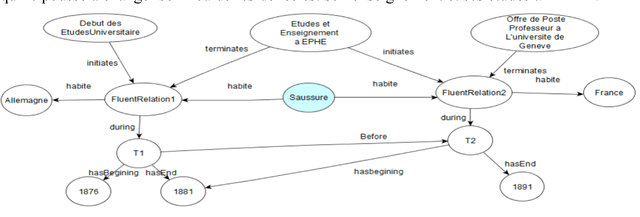Un modèle pour la représentation des connaissances temporelles dans les documents historiques
Paper and Code
Jul 25, 2017

Processing and publishing the data of the historical sciences in the semantic web is an interesting challenge in which the representation of temporal aspects plays a key role. We propose in this paper a model of temporal knowledge representation adapted to work on historical documents. This model is based on the notion of fluent that is represented in RDF graphs. We show how this model allows to represent the knowledge necessary to the historians and how it can be used to reason on this knowledge using the SWRL and SPARQL languages. This model is being used in a project to digitize, study and publish the manuscripts of linguist Ferdinand de Saussure.
* in French, IC\_2017 - 28\`emes Journ\'ees francophones d'Ing\'enierie
des Connaissances, Jul 2017, Caen, France
 Add to Chrome
Add to Chrome Add to Firefox
Add to Firefox Add to Edge
Add to Edge